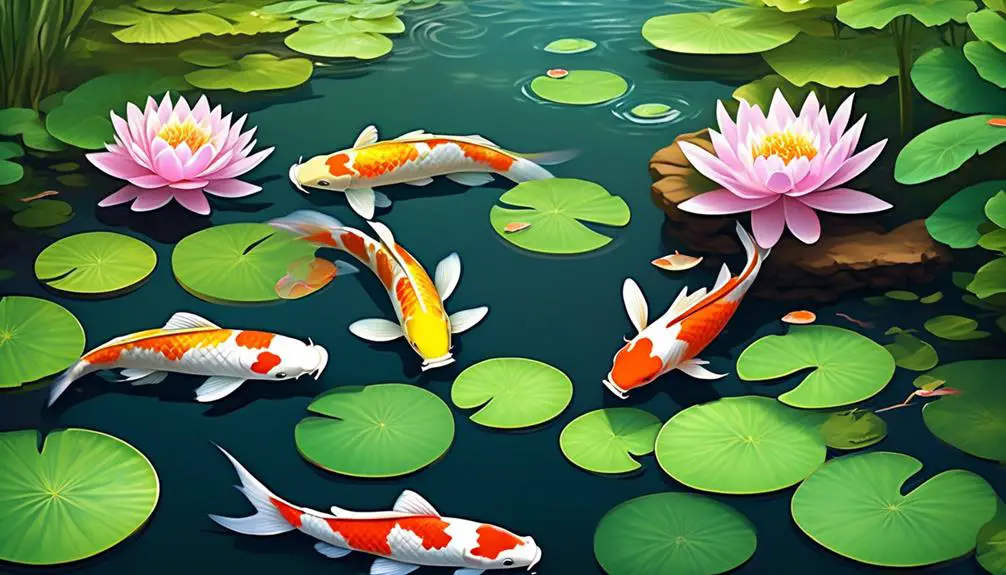Are you curious to know which fish species thrive best in outdoor ponds? It’s a common theory that certain fish are more suited to outdoor environments, but is there any truth to it?
Well, today we’re going to explore the fascinating world of outdoor pond fish and reveal the top contenders for your backyard oasis. From the elegant goldfish to the majestic koi carp, we’ll uncover their unique characteristics and discuss why they may be the perfect addition to your pond.
But that’s not all – there are a few surprises in store as well. So, get ready to discover the best fish for your outdoor pond and uncover the secrets to creating a harmonious aquatic ecosystem.
Discover how to create a stunning natural garden pool that attracts wildlife with this book.
Goldfish
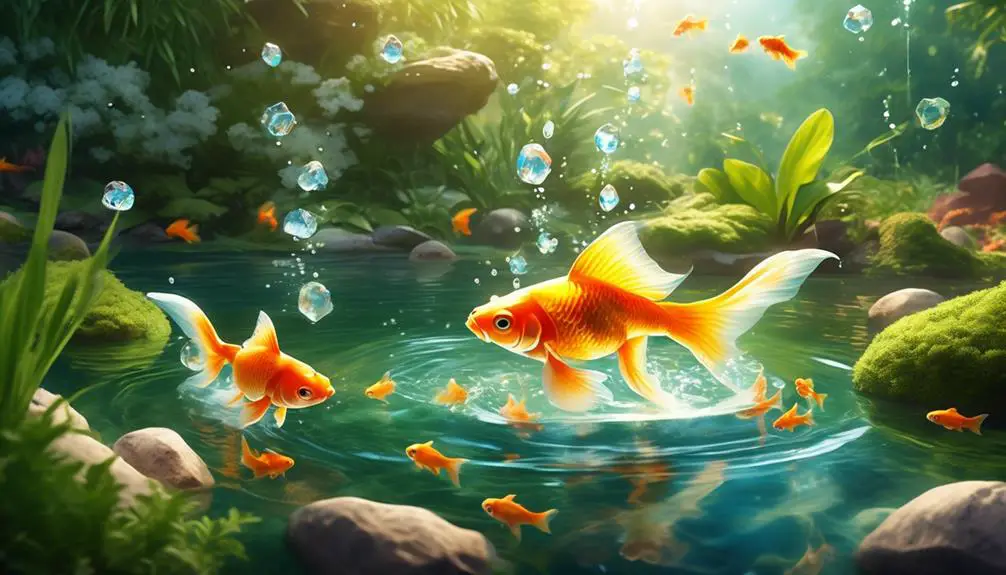
Goldfish, a popular choice for outdoor ponds, are known for their vibrant colors and adaptability to different water conditions and temperatures. They belong to the carp family and are native to East Asia. Goldfish are available in various sizes and shapes, with some reaching lengths of up to 18 inches. These fish have a lifespan of about 10 to 15 years, but with proper care, they can live even longer.
Goldfish are hardy and can tolerate a wide range of water conditions, making them suitable for outdoor ponds. They prefer calm, still water and thrive in temperatures between 65°F and 75°F. They can also tolerate colder temperatures during winter, as long as the pond doesn’t completely freeze.
When it comes to feeding goldfish, a balanced diet is essential. They’re omnivorous and can eat a variety of foods, including commercial pellets, flakes, and fresh vegetables. Overfeeding should be avoided, as it can lead to health issues like obesity and poor water quality. It’s recommended to feed them small amounts multiple times a day, especially during the warmer months when their metabolism is higher.
Koi Carp
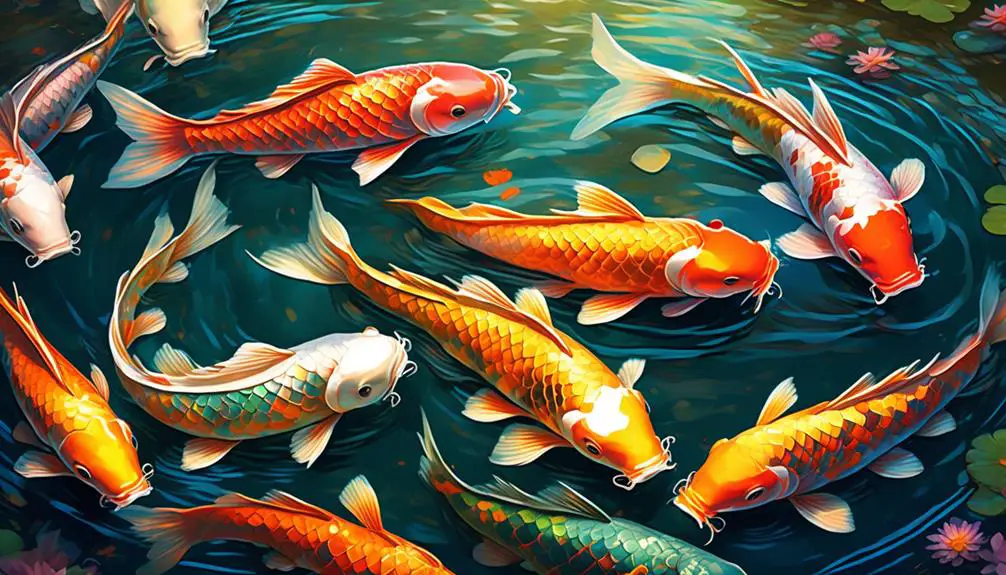
Koi Carp, a popular and prized fish species for outdoor ponds, are known for their stunning colors, graceful movements, and impressive size. Originating from Japan, these ornamental fish have been selectively bred over centuries to produce a wide variety of vibrant patterns and colorations. Koi Carp are available in shades of red, orange, yellow, black, and white, with patterns ranging from solid to intricate designs. They can grow up to three feet in length and live for several decades if provided with the right conditions.
Koi Carp are highly adaptable and can thrive in a wide range of water temperatures, from 50 to 85 degrees Fahrenheit. They prefer ponds with a depth of at least three feet, as this provides them with enough space to swim and escape predators. It’s important to maintain good water quality by installing a filtration system and regularly monitoring ammonia, nitrite, and pH levels.
Feeding Koi Carp is an essential aspect of their care. They’re omnivorous and will eat a variety of foods, including pellets, flakes, and live or frozen insects. It’s advisable to feed them small amounts several times a day to prevent overeating and ensure optimal nutrition.
To keep Koi Carp healthy and thriving, regular pond maintenance is necessary. This includes removing debris, such as fallen leaves, and monitoring water parameters to prevent the accumulation of harmful substances. Additionally, providing adequate shade and shelter, such as aquatic plants and rocks, will create a natural and comfortable environment for these beautiful fish.
Sterlet
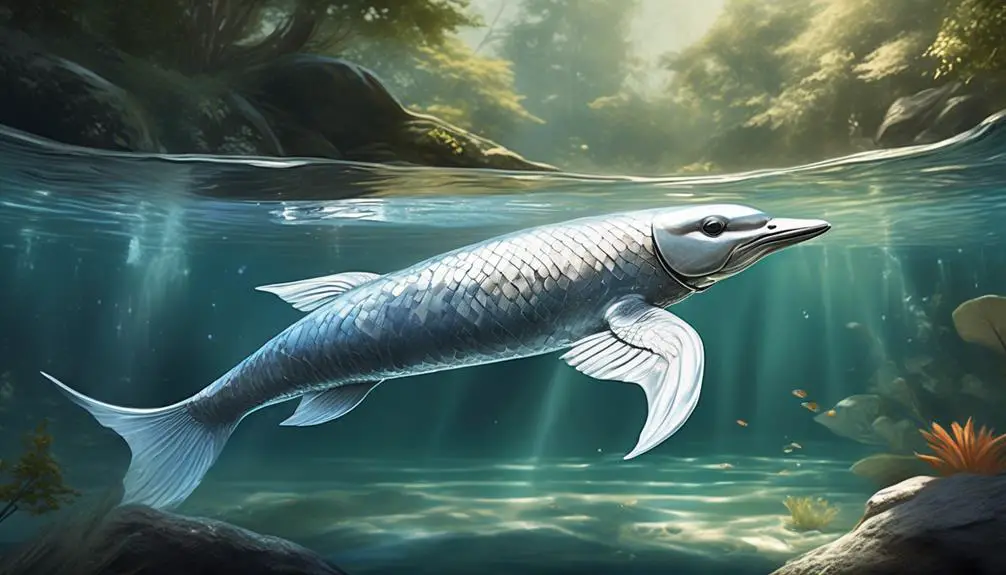
The Sterlet, a species of fish commonly found in outdoor ponds, exhibits unique characteristics and behaviors that make it an intriguing addition to any aquatic ecosystem. Belonging to the sturgeon family, the Sterlet is known for its elongated body and bony plates called scutes. It typically grows to about 2-3 feet in length and can live for over 20 years. One notable feature of the Sterlet is its ability to tolerate a wide range of water temperatures, making it suitable for outdoor ponds in various climates.
In terms of behavior, the Sterlet is a bottom-dwelling fish that spends much of its time foraging for food. It has a voracious appetite and will eat small invertebrates, insect larvae, and even small fish. This makes it an excellent addition to a pond ecosystem as it helps control populations of unwanted pests. Additionally, the Sterlet is a relatively peaceful fish that can coexist with other species without causing conflicts.
When it comes to care, the Sterlet requires a well-maintained pond with clean, oxygenated water. Adequate filtration and regular water changes are essential to ensure optimal health and growth. The pond should also have enough hiding spots, such as rocks or plants, to provide the Sterlet with a sense of security.
Weather Loach
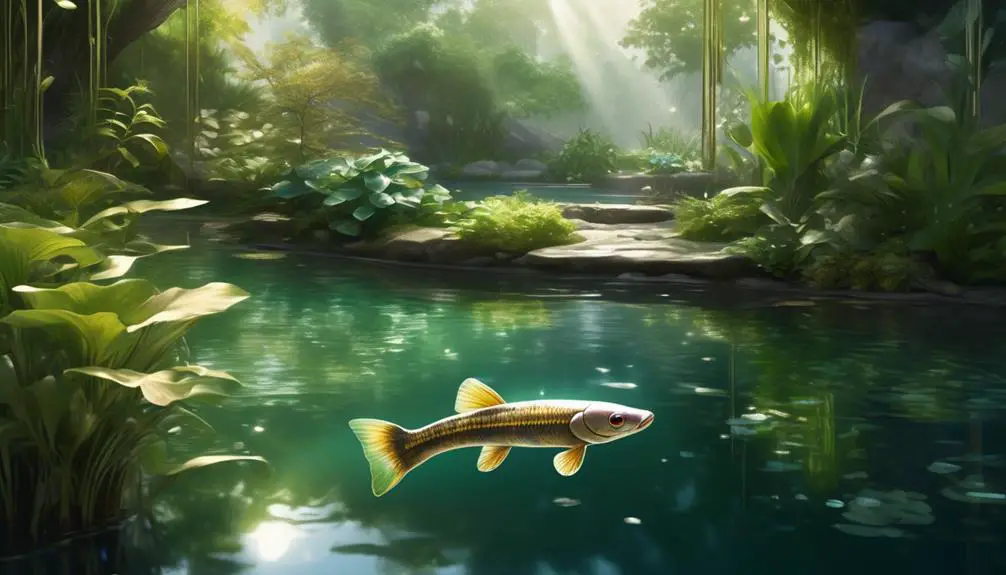
The Weather Loach, also known as the Dojo Loach, is a highly adaptable fish that can thrive in various environments. This species is known for its ability to withstand different water conditions and temperatures, making it suitable for outdoor ponds.
In addition to its adaptability, the Weather Loach plays a crucial role in maintaining a balanced ecosystem in the pond by consuming algae and small invertebrates.
Adaptability to Environments
Weather Loach, also known as Misgurnus anguillicaudatus, is a highly adaptable fish species that thrives in a variety of outdoor pond environments. This species has the remarkable ability to withstand a wide range of water conditions and temperatures. It can tolerate water temperatures as low as 41°F (5°C) and as high as 86°F (30°C).
The Weather Loach is also able to survive in water with low oxygen levels, making it well-suited for ponds with fluctuating oxygen levels. Its adaptability extends to different water qualities as well, including pH levels ranging from 6.0 to 8.0.
With its ability to adapt to various environments, the Weather Loach is a versatile and resilient choice for outdoor pond enthusiasts.
Role in Pond Ecosystem
With its impressive adaptability to various outdoor pond environments, the Weather Loach plays a crucial role in maintaining a balanced ecosystem. Also known as Misgurnus anguillicaudatus, this fish species is native to East Asia and has become popular among pond enthusiasts for its ability to thrive in different conditions.
The Weather Loach primarily feeds on small invertebrates, such as insects, worms, and crustaceans, helping to control their population in the pond. Additionally, it acts as a bottom feeder, consuming organic matter and detritus, thus preventing the buildup of waste and maintaining water quality.
This fish is also known for its burrowing behavior, which helps to aerate the substrate and improve nutrient circulation. Overall, the Weather Loach contributes significantly to the overall health and stability of the pond ecosystem.
Red Shiners
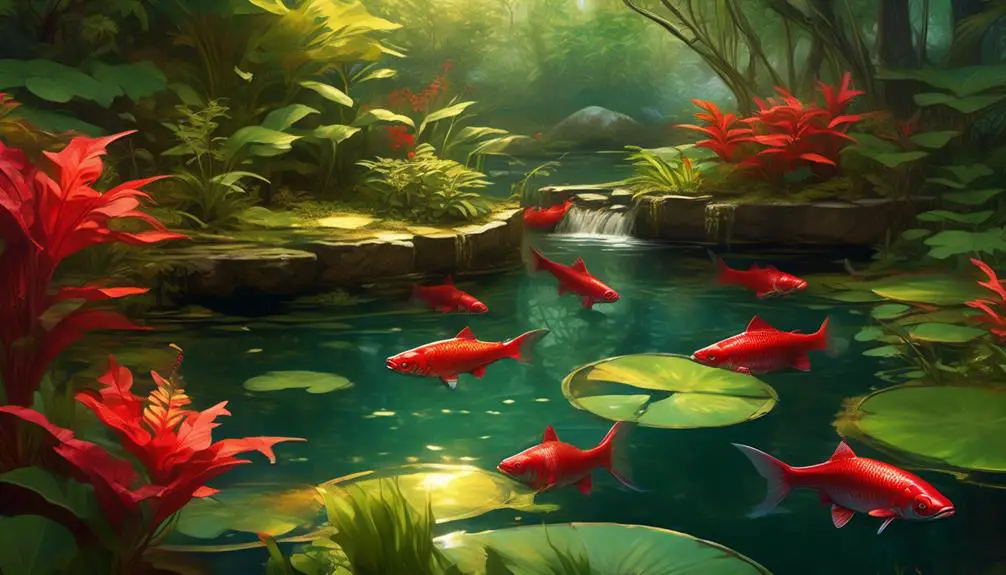
Red Shiners, a type of fish commonly found in outdoor ponds, are known for their vibrant red coloration and active behavior. These small, freshwater fish belong to the minnow family and can be a great addition to your pond. Red Shiners typically grow to about 2 to 3 inches in length and prefer to swim in schools. They’ve a streamlined body shape, allowing them to move swiftly through the water. Their bright red coloration adds a pop of color to your pond, creating a visually stunning display.
Red Shiners are hardy and adaptable, making them suitable for a range of pond environments. They can tolerate a wide range of temperatures, from cool to warm, and are able to survive in both still and flowing waters. They’re omnivorous, feeding on both plant matter and small invertebrates, which helps to keep the pond ecosystem balanced.
These active fish are constantly on the move, exploring their surroundings and interacting with other fish. They’re known for their playful behavior, often darting and chasing each other in the water. Red Shiners are also known to jump out of the water, so it’s important to have a secure pond cover to prevent them from escaping.
Plecostomus
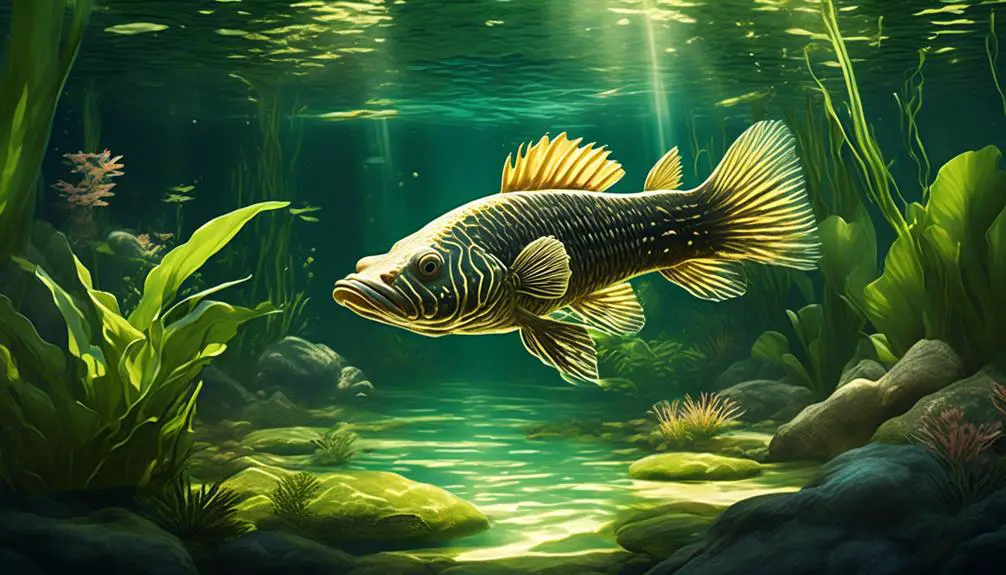
Plecostomus, also known as plecos, are a popular choice for outdoor pond fish. When it comes to pleco care, it’s important to provide them with hiding places, such as rocks or PVC pipes, to mimic their natural habitat.
Plecos are known for their algae-eating abilities, but it’s crucial to supplement their diet with sinking pellets or vegetables to ensure they receive proper nutrition.
Pleco Care Tips
Pleco care tips are essential for maintaining the health and well-being of these popular algae-eating fish in outdoor pond environments. Plecostomus, also known as plecos, are known for their ability to keep algae growth under control in ponds.
To ensure their optimal care, it’s important to provide them with a suitable environment. Plecos prefer a pH range of 6.5 to 7.5 and a water temperature between 72°F and 82°F. They also require hiding places, such as rocks or driftwood, to feel secure.
In terms of feeding, plecos are primarily herbivores and should be provided with a varied diet of algae wafers, fresh vegetables, and occasional meaty foods.
Regular water testing and maintenance, including partial water changes, are also crucial for their well-being.
Pleco Behavior Traits
One of the most fascinating aspects of Plecostomus behavior in outdoor ponds is their unique feeding habits.
Plecos, also known as armored catfish, are primarily herbivores and play a vital role in maintaining a balanced ecosystem in the pond. They’ve a voracious appetite for algae, which helps to keep the water clean and free from excessive plant growth.
Plecos also have a peculiar feeding behavior – they use their specially adapted mouthparts to scrape algae off surfaces, such as rocks, plants, and even the pond walls.
They’re known to be nocturnal feeders, becoming active during the night and resting during the day. This behavior allows them to maximize their feeding efficiency by taking advantage of the abundant algae growth that occurs in the dark.
Pleco Diet Recommendations
To ensure the optimal health and well-being of Plecostomus in outdoor ponds, it’s crucial to provide them with a carefully balanced diet.
Plecostomus, also known as plecos, are predominantly herbivorous fish that require a diet rich in plant matter. Their diet should consist of a variety of vegetables, such as zucchini, cucumber, and spinach. These vegetables should be blanched and then offered to the plecos.
Additionally, plecos can also benefit from the inclusion of algae wafers and sinking pellets in their diet. These commercially available food options are specifically formulated to meet the nutritional needs of plecos.
It’s important to note that overfeeding should be avoided, as this can lead to obesity and other health issues. Regular monitoring of the fish’s weight and adjusting the feeding accordingly is essential.
Providing a well-rounded and balanced diet will contribute to the overall health and vitality of Plecostomus in outdoor ponds.

Erzsebet Frey (Eli Frey) is an ecologist and online entrepreneur with a Master of Science in Ecology from the University of Belgrade. Originally from Serbia, she has lived in Sri Lanka since 2017. Eli has worked internationally in countries like Oman, Brazil, Germany, and Sri Lanka. In 2018, she expanded into SEO and blogging, completing courses from UC Davis and Edinburgh. Eli has founded multiple websites focused on biology, ecology, environmental science, sustainable and simple living, and outdoor activities. She enjoys creating nature and simple living videos on YouTube and participates in speleology, diving, and hiking.

